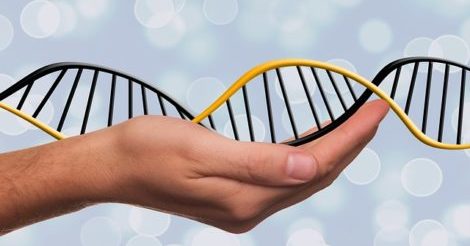
“Of course he became a supervillain; his name was Victor von Doom.” Such sentiments are common about (and among) fictional characters; naturally Remus Lupin is the one who got bit by a werewolf, not James Potter, and of all people only Otto Octavius would wind up with four extra limbs. In real life, our future choices and the events that transpire around us aren’t so easily foretold–but that doesn’t always stop us from trying. We believe we could use our time and money so much more efficiently if we only knew from day one which people will be loyal friends, productive employees, or healthy patients. And so we search for the factors and metrics that might give us, if not a complete view of the future, at least a glimpse.
Genomes tantalize us with the promise of prognostication. And so we have news of a proposed US bill that would potentially allow employers to provide cheaper health insurance to employees with healthier genes. At the same time, Canada is considering the constitutionality of legislation to improve privacy around genomic data. Without commenting on the politics or legality of either bill, I will simply observe that questions are only going to proliferate about who is allowed to know what and how they can act on it, and not merely regarding genomes or health data. There are similar conversations about how much your employer should be able to know and act on from your off-hours Facebook activity, for example.
We should certainly work to safeguard the privacy of data we deem sensitive and worthy of protection. At the same time, I suspect we will need to learn how to operate in a world where private details are public knowledge. In particular, I wonder if we will need to develop practices of forgetfulness in how we deal with other people. What information do I need to set aside in order to judge fairly? Sure, past patterns directly inform certain present decisions. At the same time, if we believe in redemption we need to allow for people to change. We can also exercise some humility in recognizing that even with complete and accurate information, our ability to predict the future is limited. Most importantly, we still need to treat people as ends unto themselves, not simply means by which we can maximize our own social or economic fulfillment.
Andy has worn many hats in his life. He knows this is a dreadfully clichéd notion, but since it is also literally true he uses it anyway. Among his current metaphorical hats: husband of one wife, father of two teenagers, reader of science fiction and science fact, enthusiast of contemporary symphonic music, and chief science officer. Previous metaphorical hats include: comp bio postdoc, molecular biology grad student, InterVarsity chapter president (that one came with a literal hat), music store clerk, house painter, and mosquito trapper. Among his more unique literal hats: British bobby, captain’s hats (of varying levels of authenticity) of several specific vessels, a deerstalker from 221B Baker St, and a railroad engineer’s cap. His monthly Science in Review is drawn from his weekly Science Corner posts — Wednesdays, 8am (Eastern) on the Emerging Scholars Network Blog. His book Faith across the Multiverse is available from Hendrickson.

Leave a Reply